Homepage / News Details
How do you make calcium hypochlorite solution?
- Categroy:News
- Author:
- Origin:
- Release Time:2021-04-28 14:25
- Views:
【Summary】For example to make a 0.5% dilute chlorine solution from a dry powder of 35% calcium hypochlorite = [0.5%/35%] x 1000 = 14.2 g. Hence add 14.2 grams of dry powder to 1 litre of water or 142 grams to 10 litres of water.
How do you make calcium hypochlorite solution?
【Summary】For example to make a 0.5% dilute chlorine solution from a dry powder of 35% calcium hypochlorite = [0.5%/35%] x 1000 = 14.2 g. Hence add 14.2 grams of dry powder to 1 litre of water or 142 grams to 10 litres of water.
- Categroy:News
- Author:
- Origin:
- Release Time:2021-04-28 14:25
- Views:
Preparation of 0.5% chlorine solution:
The general formula for making a dilute chlorine solution from a commercial preparation of any given concentration is as follows: Total parts of water = [% concentrate/% dilute] -1. For example, to make a 0.5% dilute solution of chlorine from 5% concentrated liquid household bleach = [5.0%/0.5%] -1 = 10-1 = 9 parts of water; hence add one part of concentrated bleach to nine parts of water.
If one is using commercially available dry powder chlorine, use the following formula to calculate the amount (in grams) of dry powder required to make 0.5% chlorine solution:
Grams/litre = [% dilute/% concentrate] x 1000. For example to make a 0.5% dilute chlorine solution from a dry powder of 35% calcium hypochlorite = [0.5%/35%] x 1000 = 14.2 g. Hence add 14.2 grams of dry powder to 1 litre of water or 142 grams to 10 litres of water. The instruments should not be left in dilute bleach for more than 10 minutes and should be cleaned in boiled water immediately after decontamination to prevent discolouration and corrosion of metal.
Releate News

Time of issue : 2024-05-08 13:15:35

Time of issue : 2024-04-29 13:33:08

Time of issue : 2024-04-22 08:56:03
CONTACT US
PRODUCTS
CALCIUM HYPOCHLORITE
TCCA
SDIC
BCDMH
FEEDBACK
© 1999-2018 北京网站建设有限公司 Copyright © 2012-2022 All Rights Reserved Powered by www.300.cn 冀ICP备12012949号 津公网安备 12010302002173号 Seo tag

